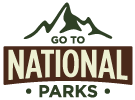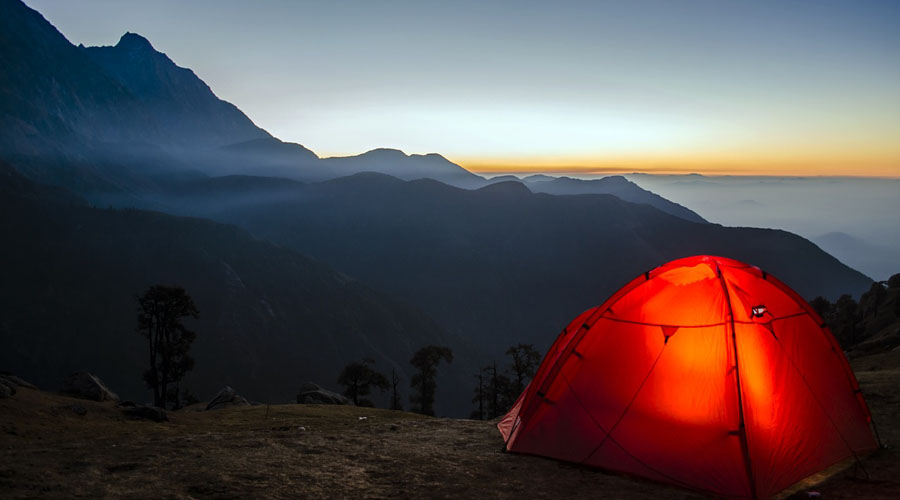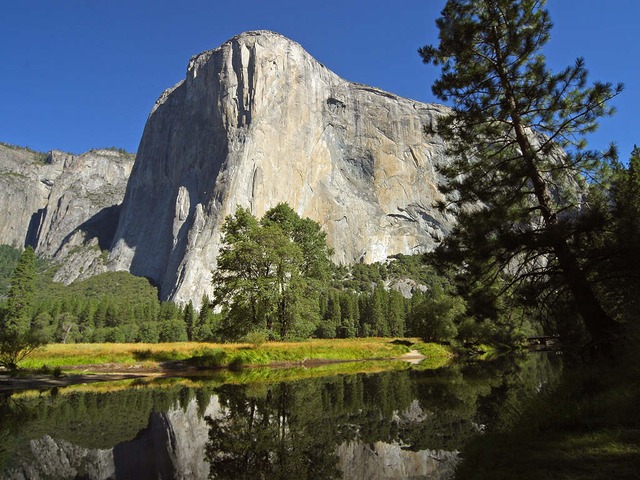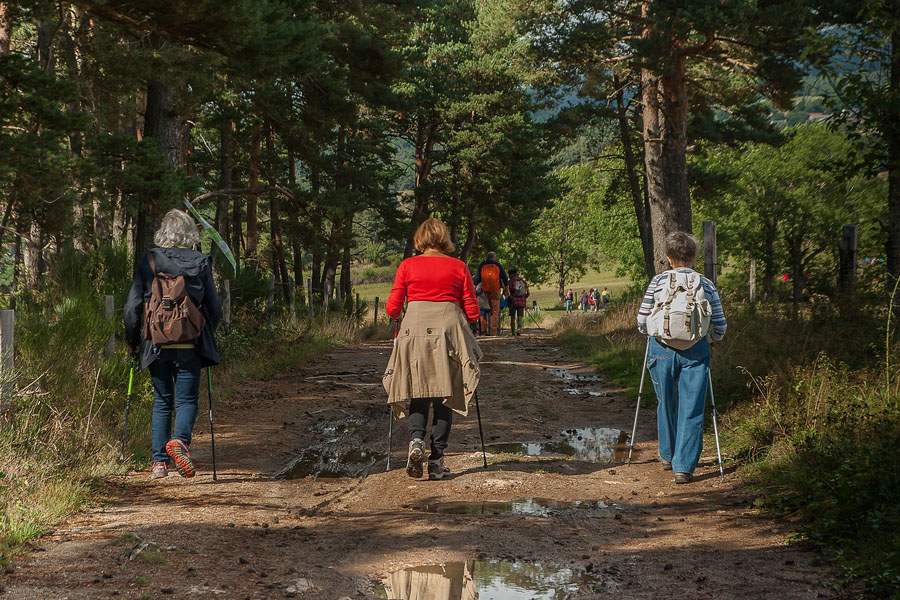Camping in America’s National Parks is a privilege handed down through generations of Americans. Our national parks are astoundingly beautiful. Breathtaking doesn’t begin to describe it.
While some begrudgingly accepted the regulations put on federal lands, most treasure these areas, treating them with love and respect. Either way, the National Parks as they exist now are some of the most pristine and beautiful regions of the country.
Like this gorgeous view of Glacier National Park:
Via GIPHY
They present America as it was before Europeans arrived, and before urbanization spread across our nation from coast to coast. Because of this, camping in a National Park is a unique and memorable experience.
Whether you’re camping from the back of your car or setting out on a long-distance hike, understanding why these parks exist is paramount to enjoying and respecting them.
What Makes a National Park Special?
America’s National Parks represent the best parts of the United States. This is true in more than one sense of the word. Not only do they preserve the most beautiful and natural parts of the country…
Via GIPHY
But they are also symbols for the ideals the United States try to uphold.
America’s National Parks have been around for nearly 150 years, and the history of the National Parks and the National Parks Service (NPS) clings closely to that of the United States.
But they are far more than areas where nature is untouched. They are places where you can go camping, hiking, rock climbing, fishing, and otherwise get in touch with nature.
The mission of the National Parks Service
The National Parks Service’s philosophy is based around preserving culture, nature, and history for people to enjoy for centuries to come. Its philosophy was born from people who wanted to protect the wild from civilization.
Via GIPHY
Originally, the idea of a national park started in the 1800s, as Americans started expanding their territory across North America. Driven by a desire to develop and own land, many Americans treated the West as a frightening place waiting to be civilized.
But some people, like artist George Catlin, had a different approach. They saw the West as a place full of wonder, beauty, and awe.
Via GIPHY
They knew that Native Americans, as well as wildlife and natural resources, were threatened by American expansion. So they wanted to create parks that would protect them and give Americans a place to step away from the bustle of modernization.
While they couldn’t yet see our modern life, it was clear that the land needed protection. So it wouldn’t all end up like this:
Via GIPHY
Frederick Law Olmstead wanted people to have the opportunity to “contemplate the natural rhythms of the natural world.”
Now, these same philosophies dictate the actions of the NPS.
Their aim: “to extend the benefits of natural and cultural resource conservation and outdoor recreation throughout this country and the world.”
Spotlight: Mesa Verde National Park
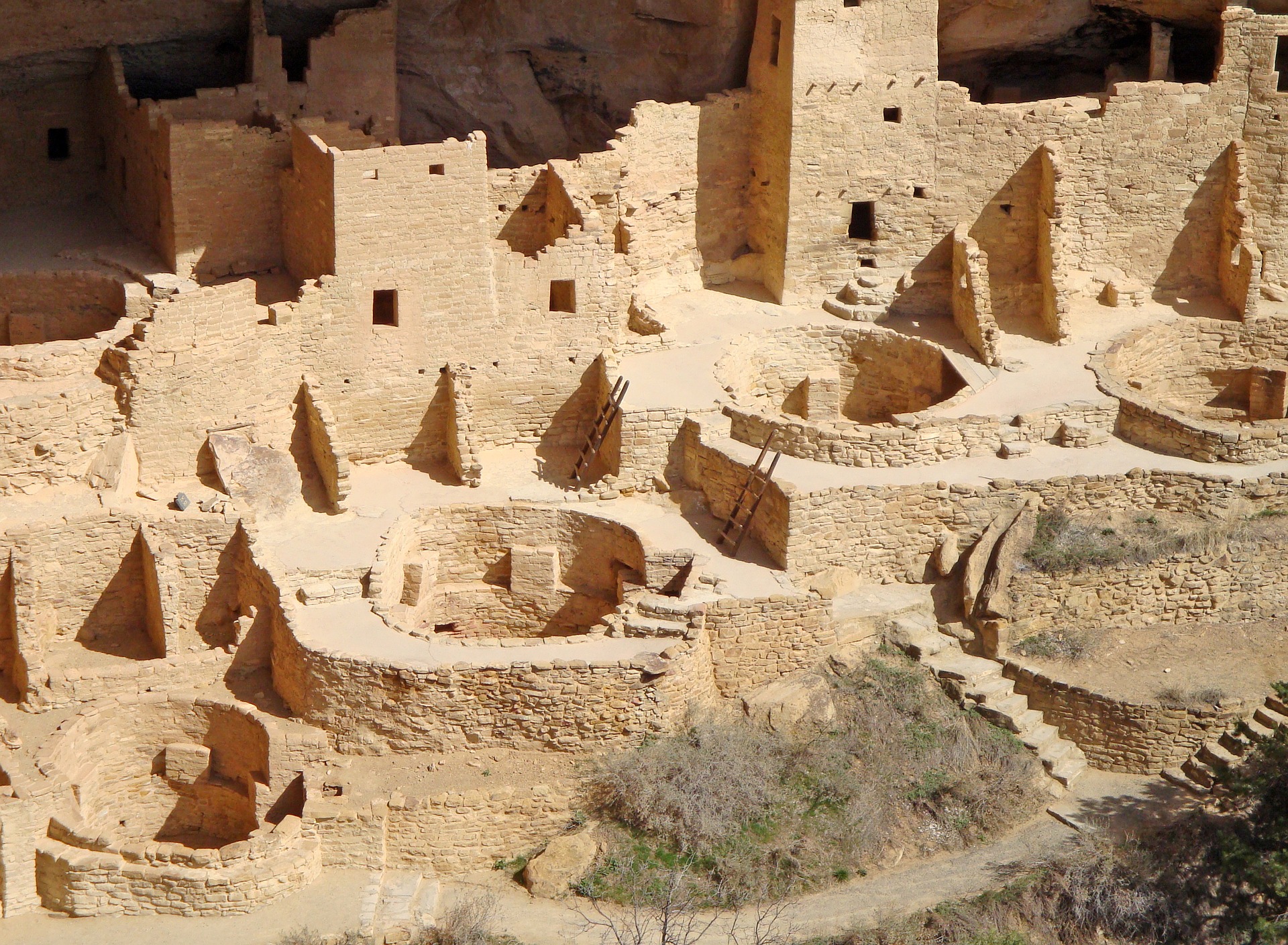
Image by Aline Dassel, CC0 Creative Commons, via Pixabay
Mesa Verde National Park represents the cultural side of America’s National Parks. One of the first National Parks, established in 1906, Mesa Verde preserves 700 years of Pueblo culture. Hopi Indians, who once lived on top of the titular mesa, moved below the cliffs into iconic pueblo dwellings.
The park contains almost 5,000 archaeological sites, including 600 houses, masonry towers, and farming structures.
This park demonstrates the NPS’s mission to preserve the heritage and culture of both America and the nations that existed before.
How do you create a National Park?
There are only 61 National Parks in existence and not even one for each state. Turning a site into a National Park is a process that can take decades.
Via GIPHY
Even a donation of land can get mired in the processes.
That’s because only an act of Congress can create a National Park.
But that’s not the first step. First, the NPS must conduct a three-year feasibility study on the site.
Via GIPHY
This often takes longer to allow for a complete study. Because of the length and number of the studies the NPS has taken on, there’s a huge backlog of sites nominated to be a National Park.
The NPS then ranks them with a point system and recommends the highest ranking sites to Congress.
But keep in mind…
Even once all this has happened, it’s not certain for a site to become a National Park. The proposal must pass both houses of Congress.
Fortunately, a National Park isn’t the only option for federal protection.
Via GIPHY
Other National Parks Service designations
While going straight to National Park level is a lengthy process, there are other ways for an area to fall under NPS jurisdiction. Every site administered by the NPS is called a “unit.” There is a wide range of units.
This means that relatively small areas of land and even manmade structures can become nationally-recognized for their natural and cultural importance.
NPS units include:
- National preserves
- National memorials
- National historic sites
- National sea and lakeshores
- National monuments
National monuments are most similar to parks. Rather than preserving diverse natural resources, they usually focus on just one. Reservations, fossil sites, and the Statue of Liberty are examples of national monuments:
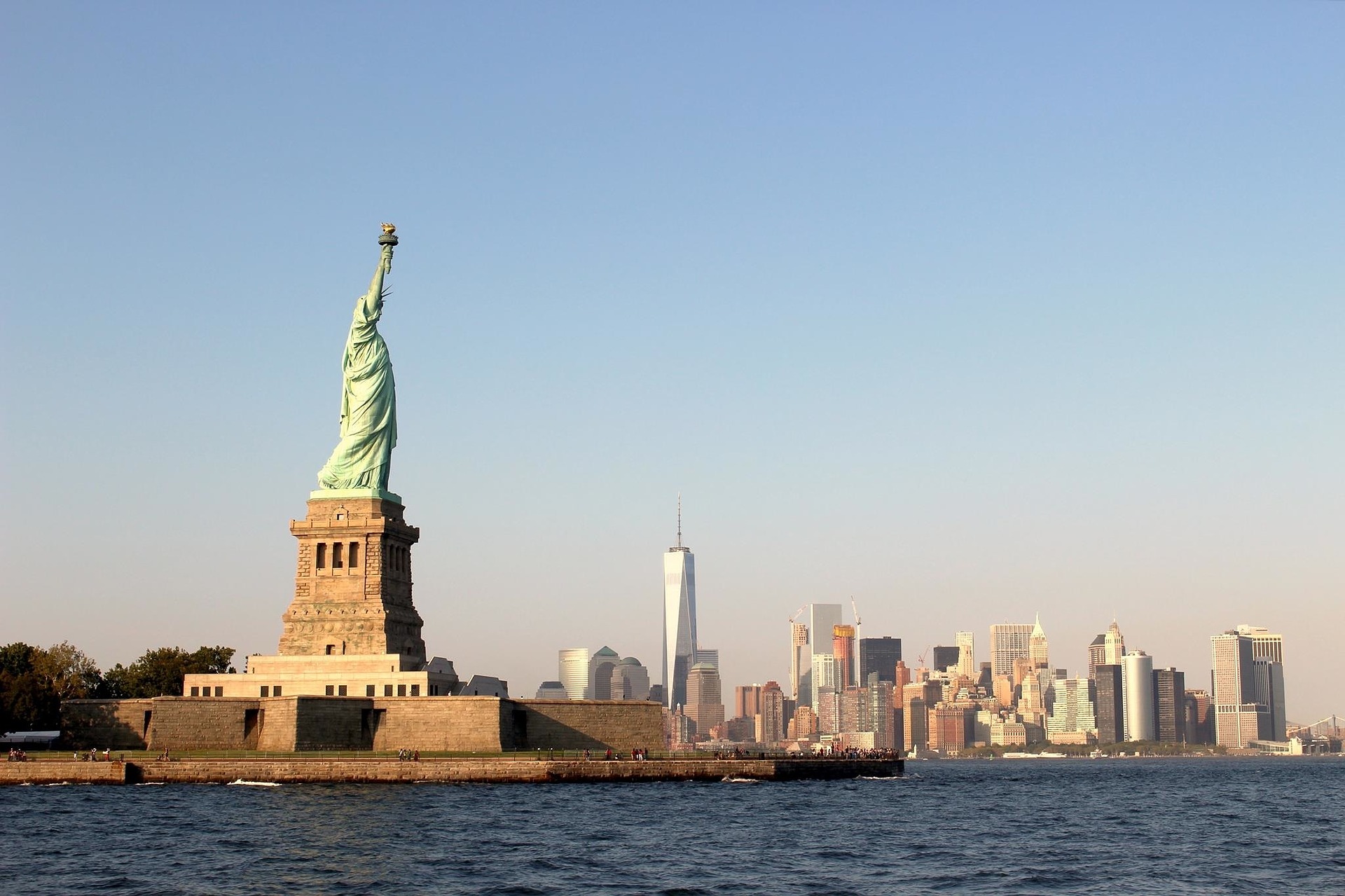
Image by Free Photos, CC0 Creative Commons, via Pixabay
Sometimes, the path to parkhood lies through its prior designation as an NPS unit. It helps streamline the process and demonstrates its value as a potential park.
In fact, two national parks created since 2000 were originally national monuments.
These are Pinnacles in California…
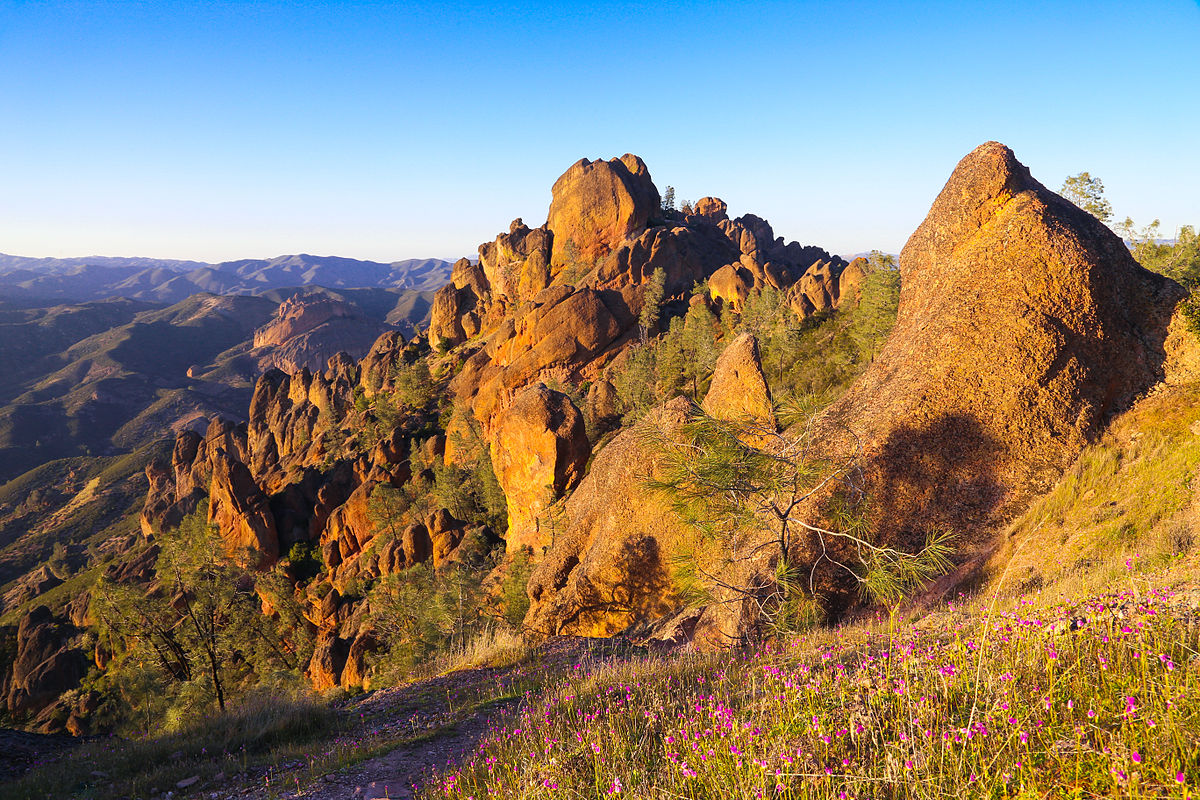
Image by Joe Parks from Berkeley, CA [CC BY 2.0], via Wikimedia Commons
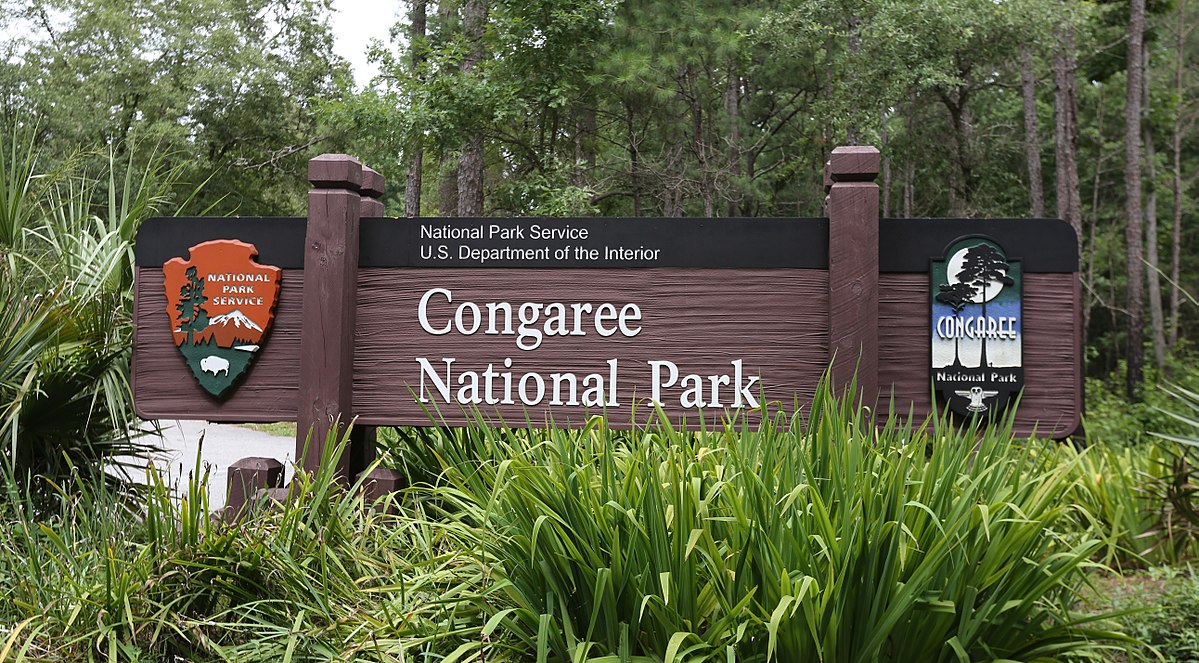
Image by Will Thomas [CC BY-SA 3.0], via Wikimedia Commons

Indiana Dunes State Park Beach, image CC0 Creative Commons, via Pixabay
While the national parks are the largest and most diverse, the other NPS units mark points of interest and places in need of conservation across the country.
In addition to the 61 national parks, there are a total of 418 NPS units across the country.
Even if you’re far from one of the 61 National Parks, there’s sure to be an NPS park closeby.
Where are the parks located?
There are 61 National Parks spread across 29 states, as well as territories such as American Samoa and the U.S. Virgin Islands.
They are clustered mainly in the West:
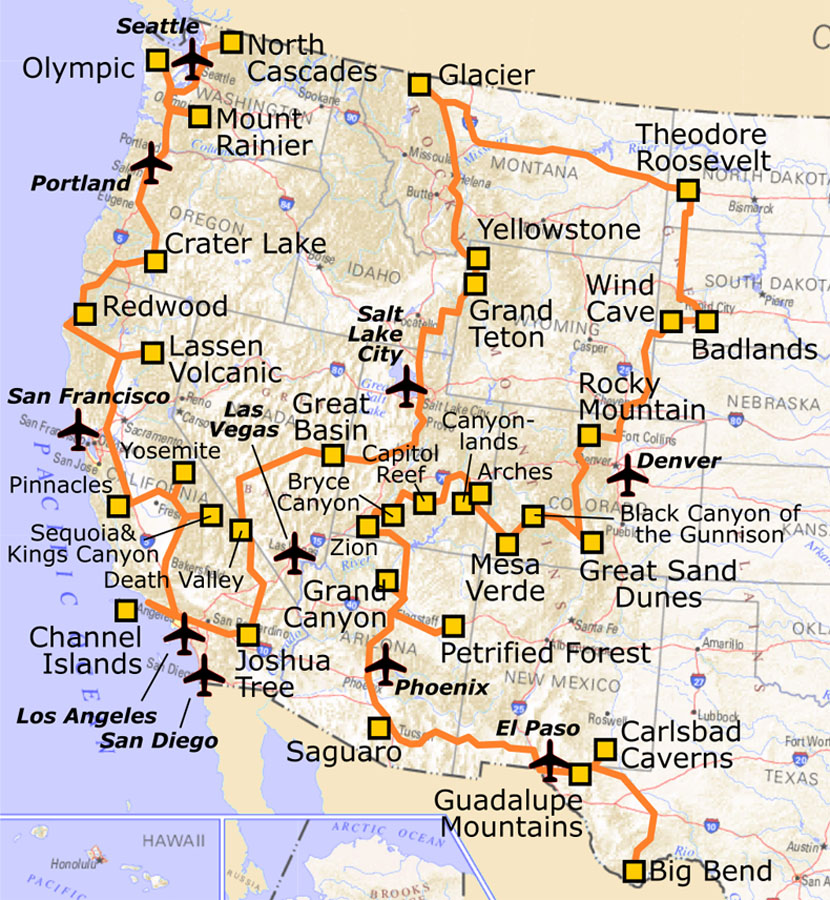
National Park Route by Stilfehler [CC BY-SA 4.0], via Wikimedia Commons
But Americans moved west as their appreciation of nature grew. By the time America spanned the continent, Americans had realized that most of the West couldn’t, or shouldn’t, leave its natural untouched state.
If you’re from the eastern or southern parts of the country, there are fewer National Parks available. But that doesn’t mean the parks in the east and southeast, are any less beautiful because of their sparseness.
Like Acadia in Maine:

Bass Harbor Head Lighthouse, image CC0 Creative Commons, via the National Parks Service
Shenandoah in Virginia:
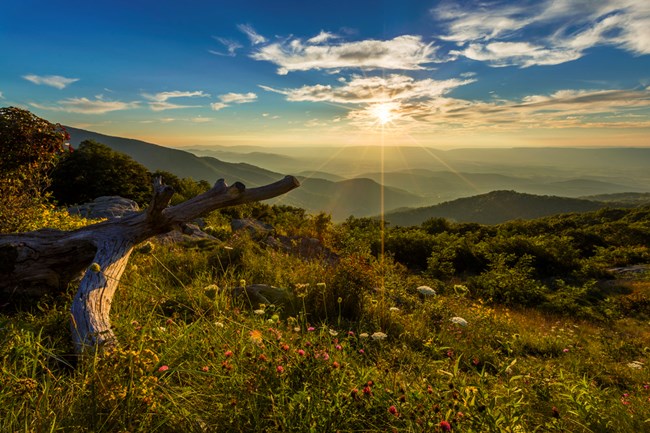
Timber Hollow Overlook, image CC0 Creative Commons, via the National Parks Service
Or the Everglades in Florida:
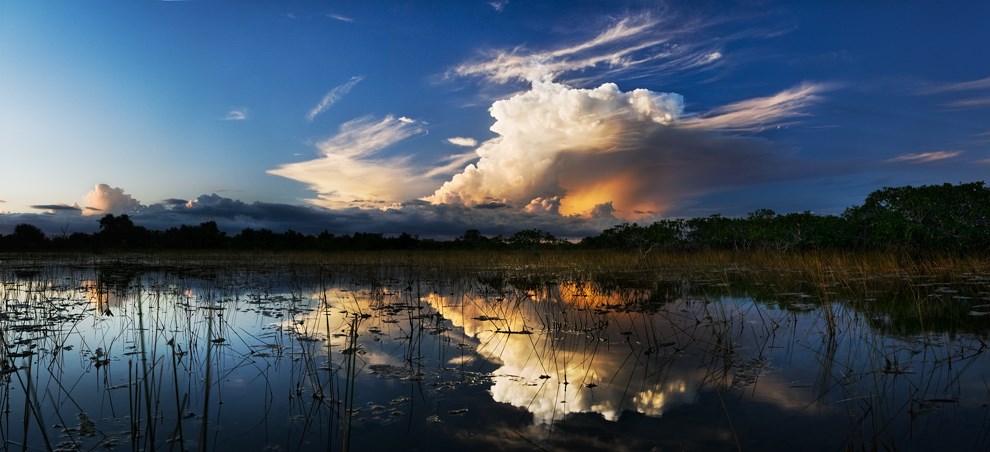
Cloudy sky NPS photo B. Call, image CC0 Creative Commons, via the National Parks Service
And don’t forget, there are a lot of other national monuments, preserves, and shores to fill in the spaces.
For those of you in the West, there are many more iconic National Parks.
From the deserts of southern Texas…
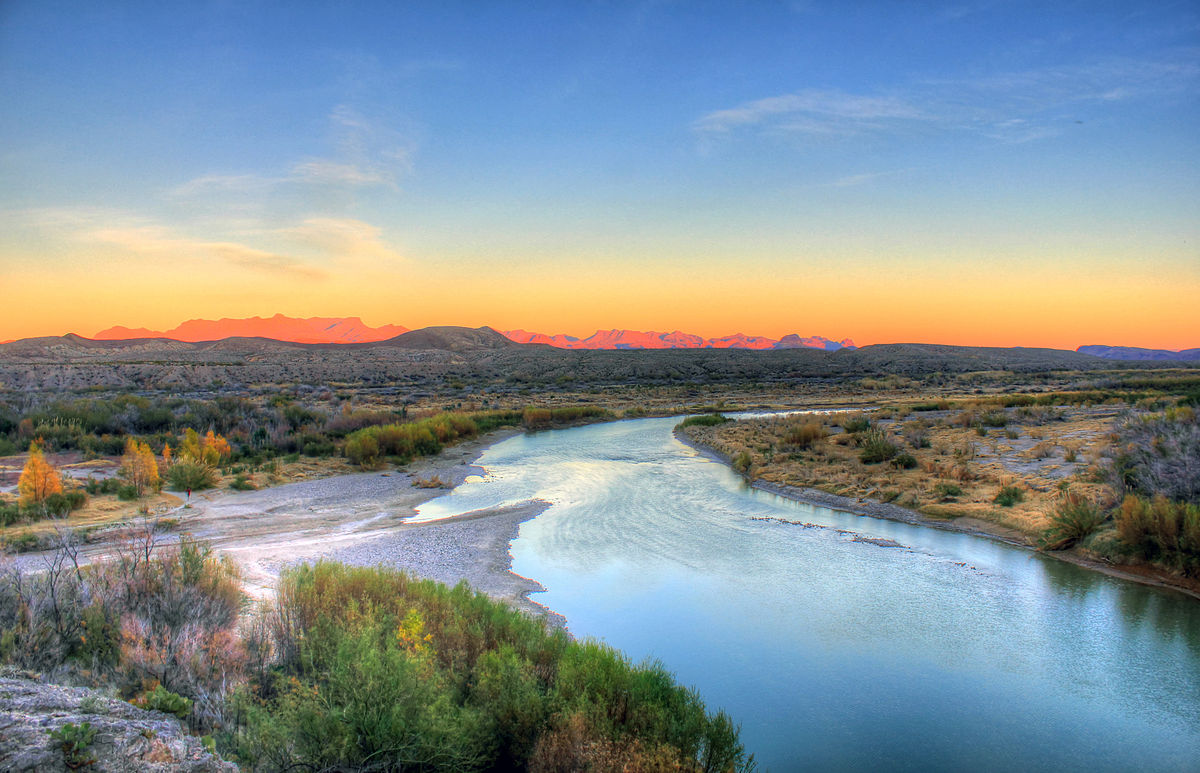
Image by Yinan Chen, CC0 Creative Commons, via Wikimedia Commons
To the lush Cascades in Oregon…

Cascade Pass and Pelton Basin, image CC0 Creative Commons, via the National Parks Service
The West has options for even the least outdoorsy campers in your group.
One Hundred Years of National Parks
While the first National Park was established in 1872, the NPS is quite a bit younger. It celebrated its centenary in 2016.
But the path from the first park to the most recent park in 2019 is far from straightforward.
And it starts in Yellowstone with John Muir and Theodore Roosevelt.
The first National Park
Via GIPHY
On their expeditions to the West, American expansionists were inspired by its grandeur and beauty. While some were inspired to own all of it, others felt the urge to protect it.
Naturalist John Muir wrote about his travels in the West. His descriptions of wilderness and beauty sparked the imaginations of Americans back East and helped advance the national parks movement.
Here’s a taste of how Muir felt about Yellowstone park’s extreme beauty, speaking of a sunset atop Mt. Washburn:
“[T]he Absaroka range is baptized in the divine light of the alpenglow, and its rocks and trees are transfigured.
Next to the light of the dawn on high mountain tops, the alpenglow is the most impressive of all the terrestrial manifestations of God. Now comes the gloaming … do not let your town habits draw you away to the hotel.
Stay on this good fire-mountain and spend the night among the stars. Watch their glorious bloom until the dawn, and get one more baptism of light.”
While Yellowstone was the first national park, it wasn’t the first area to be protected by the government. During the Civil War, the Yosemite Valley was placed under control of the United States Army.
Here’s an image of the Yosemite Valley:
It wasn’t until after the Civil War that Yellowstone National Park was created by President Ulysses S. Grant.
Yellowstone wasn’t just the first national park in America — it introduced the idea to the world.
But it would be decades before the trend really caught on.
Spotlight: Yellowstone National Park
As America’s first National Park, Yellowstone is one of the largest and most diverse in both ecosystems and wildlife.
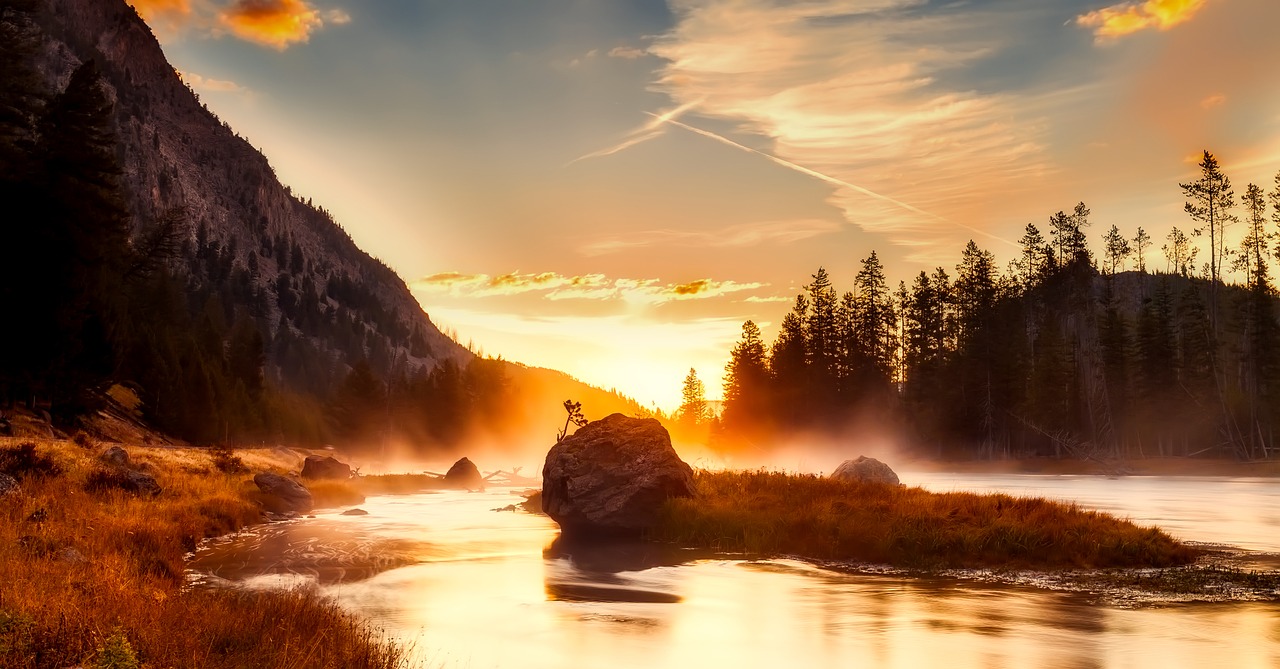
Image by David Mark, CC0 Creative Commons, via Pixabay
Located in northwest Wyoming, as well as Montana and Idaho, the striking landscape was carved by prehistoric glaciers. Here, there are natural wonders like mountains, forests, and hot springs and geysers powered by a massive subterranean volcano.
Herd animals like bison, elk, and antelopes abound in Yellowstone, but many rarer animals live here as well. Wolves, bighorn sheep, and even grizzly bears inhabit the park.
From its ancient landscape to its widespread biodiversity, Yellowstone represents America at its most wild.
FROM 1 PARK TO 61
Via GIPHY
After the creation of Yellowstone, parks were placed under the protection of the United States Army.
Theodore Roosevelt, president from 1901 to 1909, was more active than any other president at making national parks.
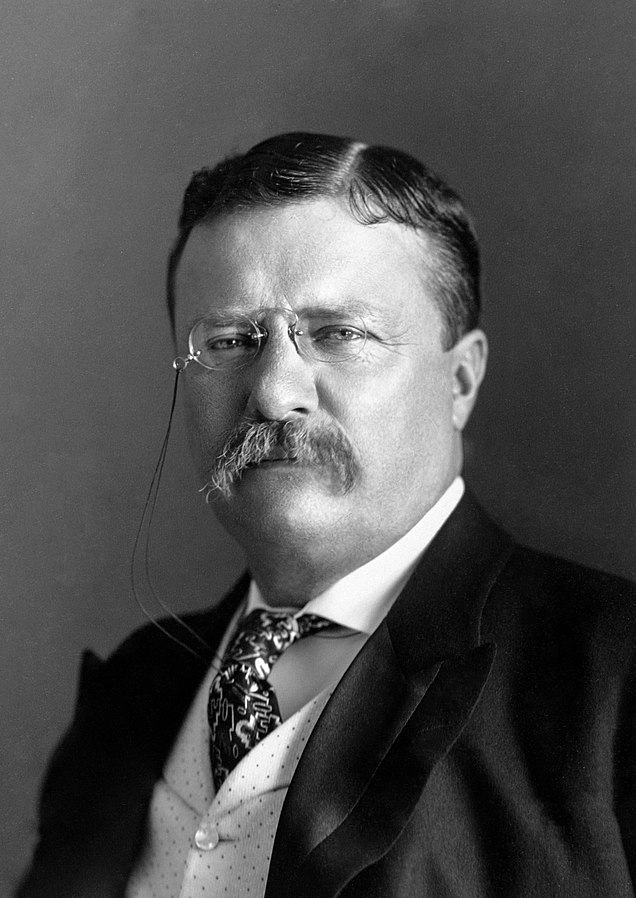
President Theodore Roosevelt, Pach Bros. [Public domain], via Wikimedia Commons
Check this out:
During his eight years, he created 5 parks, 18 national monuments, 4 national game refuges, 51 bird sanctuaries, and over 100 million acres of national forest.
It’s safe to say he was committed to conservation!
It would be another seven years after the end of Roosevelt’s term, though, before there would be any system in place to manage the parks. The NPS took over for the Army in 1916 under the direction of Stephen Mather.
Mather’s direction led to the creation of seven more parks. Mather also started planning for the formation of National Parks in the Southeast, such as Shenandoah.
Also Mammoth Cave…
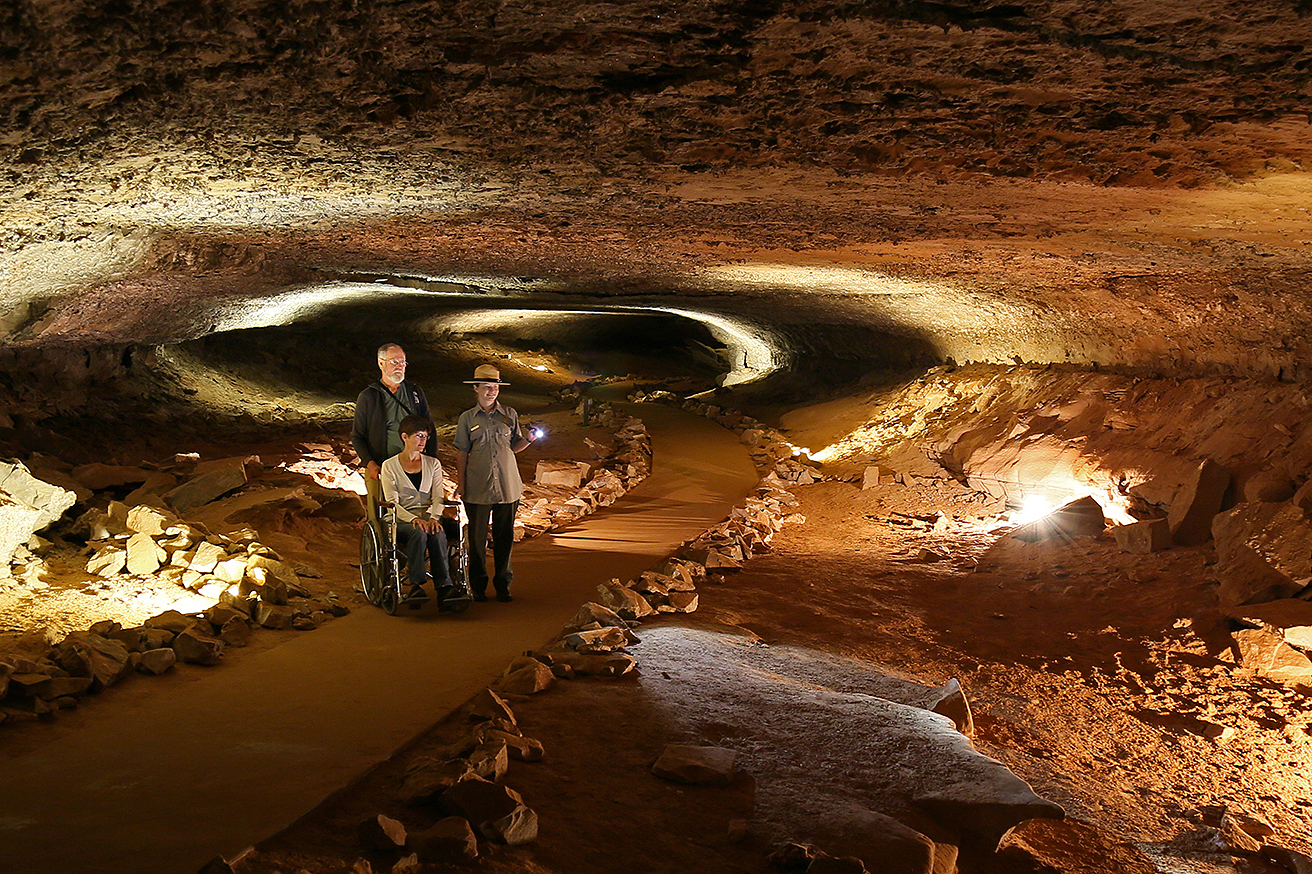
Mammoth Cave, CC0 Creative Commons, via the National Parks Service
And the Great Smoky Mountains.
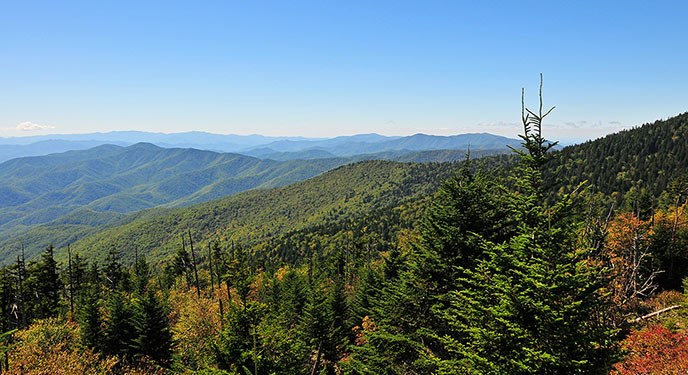
Clingmans Dome Highest Peak, CC0 Creative Commons, via the National Parks Service
These Eastern National Parks brought them closer to population centers, giving more Americans a chance to experience untouched nature than ever before.
But the parks under Mather weren’t all perfect.
This is a little shocking, but it’s history:
The NPS created zoos within the parks, stocked bodies of water with nonnative fish, and even killed predators such as wolves and coyotes to help attract visitors.
Building the Parks’ legacy
“Americans developed a national pride of the natural wonders in this nation and they believed that they rivaled the great castles and cathedrals of Europe,”
- David Barna, National Park Service Chief of Public Affairs.
Before long, the American government restructured the NPS.
In 1933, President Franklin Delano Roosevelt reorganized the organization. He placed them in charge of national monuments as well as the parks in Washington, DC. This set the NPS up to take a much more involved approach in our nation’s parks.
But it didn’t stop there:
The next major act of legislation came with the Wilderness Act of 1964.
With this, Congress began to secure natural sites, designated “wilderness areas,” to preserve them. By adopting this policy, it became much easier for potential park sites to gain protection from development.
Heading further to the future:
Via GIPHY
The Wild and Scenic Rivers Act and the National Trails System Act, both of 1968, diversified the reach of the NPS. They designated eight rivers and two scenic trails, respectively. They also recommended several others for later addition.
These two acts gave the NPS a framework for adding and regulating long, irregular territories surrounding rivers and trails.
In 1978, the Redwood National Parks and Expansion Act expanded the park boundaries of Redwood National Park, as they were being threatened by logging outside the park.
That act established a precedent of expansion and recognized that parks needed to be protected from outside their borders as well.
The Redwood National Park is still a sight to behold, because we protected it:

Howland Hill Road, CC0 Creative Commons, via the National Parks Service
In the years since then, various pieces of legislation have expanded the parks. For example, the 1980 Alaska National Interest Lands Conservation Act more than doubled the overall area of the National Parks.
Did you know, we have national parks all over the globe?
The United States has also established National Parks in territories across the world.
National Parks worldwide
With United States territories spread far across the world, it makes sense that some of these remote places would qualify for national parks.
Alaska, which comprises almost completely of untouched wilderness, has some of the most massive parks within its borders. Tiny Hawaii alone has two.
Like the Volcanoes National Park:
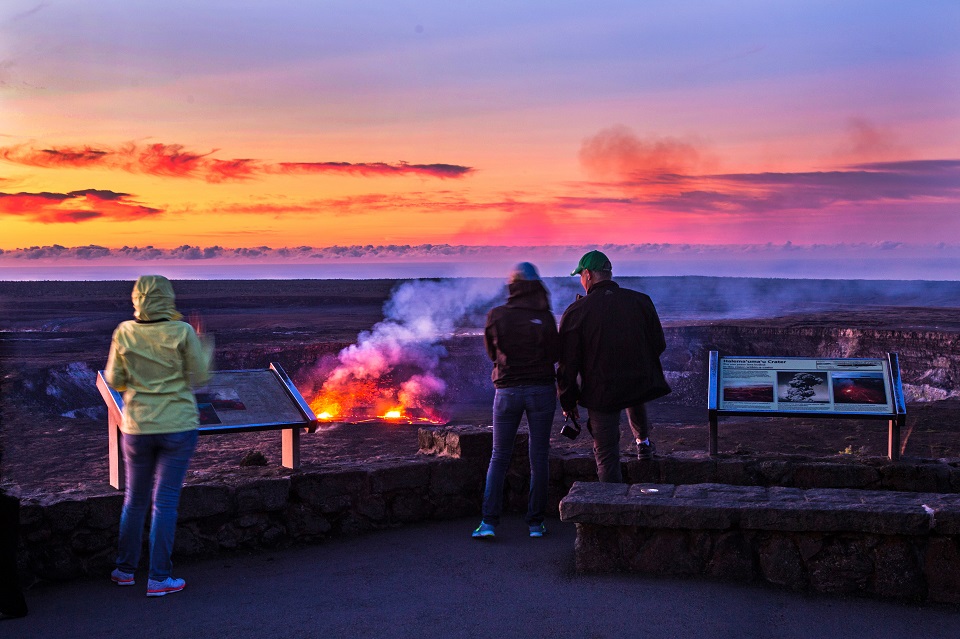
Summit eruption of Kilauea, by Janice Wei, CC0 Creative Commons, via the National Parks Service
And American territories like Samoa and the Virgin Islands are some of the most remote parks in the system.
But the legacy of America’s national parks spreads far beyond its borders.
Ready to have your mind blow?
Nearly 100 countries have national parks now, starting from America’s example.
Via GIPHY
Even relatively small countries are starting to move into creating national parks. For example, Timor-Leste, an island nation in southern Asia, has recently created its first national park.
Much like the parks located in the eastern part of the United States, the process involves removing people from the newly protected areas. The problem is, around 15,000 people inhabit what is now designated a national park.
Despite the hardships this park will face in achieving its goal of natural preservation, the values laid down in 1872 are present in it and every other national park across the world.
Spotlight: Virgin Islands NP
The Virgin Islands National Park covers two of the Virgin Islands — St. John and Hassel Island — almost entirely.
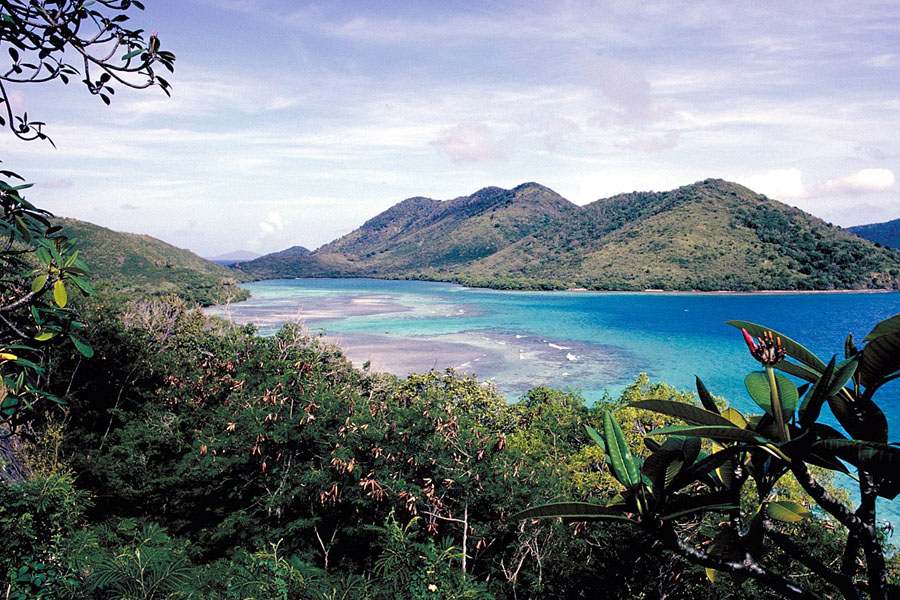
Virgin Island National Park, CC0 Creative Commons, via the National Parks Service
Contrary to what the name might suggest, these islands are valuable for far more than their untouched nature. They carry nearly 1,500 years of artifacts from Taino culture on the islands.
These archaeological sites, which include ancient rock carvings, span from 840 BCE to Columbus’s arrival in 1493.
With over 100 historic sites within the bounds of the park, the U.S. Virgin Islands National Park preserves some of the first interactions between European colonists, African slaves, and Native American people.
Virgin Islands National Park exemplifies the global reach which the NPS strives towards while maintaining the culture of native North American peoples displaced by colonists. Although it is more distant for those of you living in the mainland United States, it is a thoroughly beautiful and enriching park.
Preparing for Your National Park Visit
Via GIPHY
Camping in a National Park is much like camping anywhere else. It’s important that you attend to some basic needs and learn some basic skills before setting out.
One of the areas a National Park camping trip will differ is in availability. National Parks like Yellowstone, Yosemite, and the Great Smoky Mountains are in high demand all summer long.
Camping here isn’t as easy as loading up the car and going tomorrow.
Likewise, there are more rules and regulations surrounding National Parks. Most of these are for the purpose of preservation, like those prohibiting wood collection for fires.
However, many of these parks contain animals in numbers unseen anywhere else. Conditions like these call for additional safety considerations.
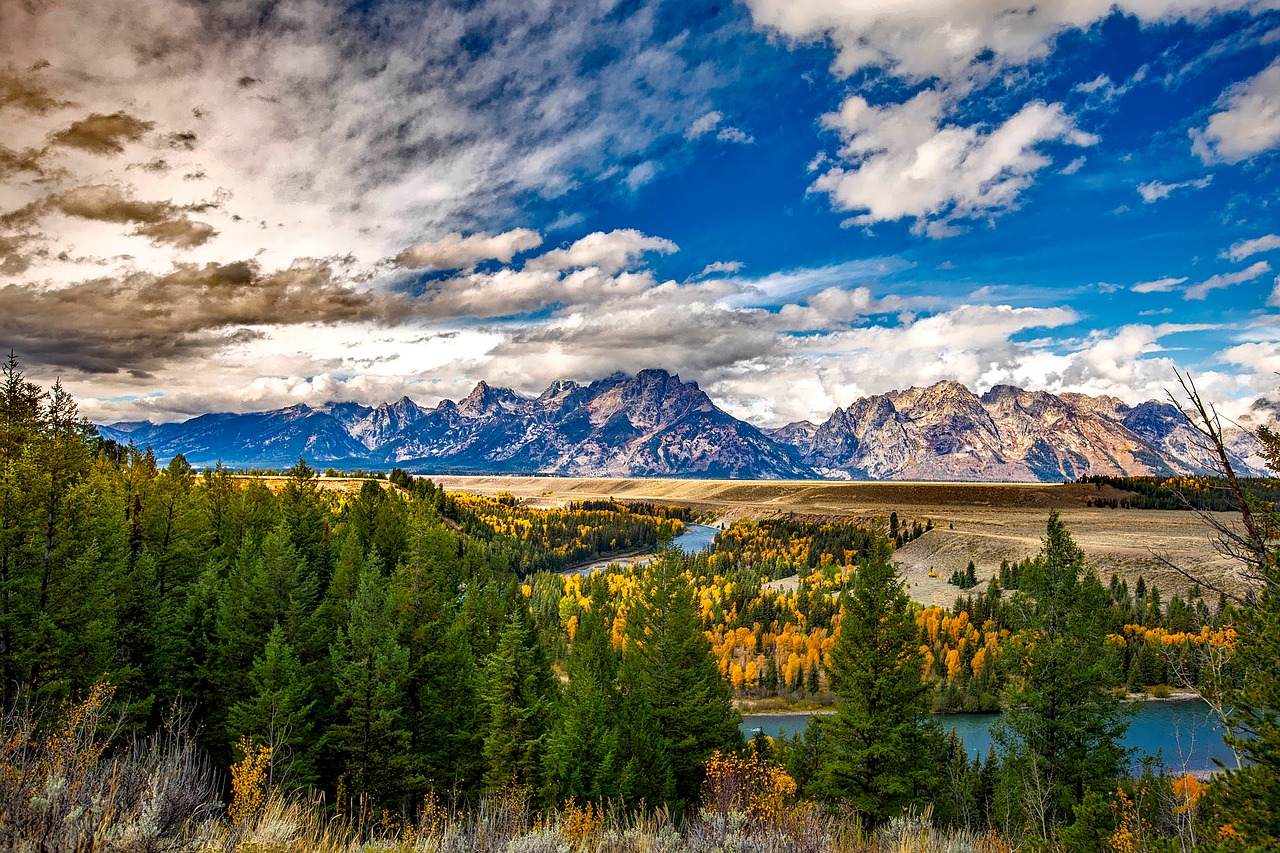
Image by David Mark, CC0 Creative Commons, via Pixabay
Picking your park
The first step in planning your trip is of course picking which park, or parks, you want to go to.
Via GIPHY
Taking the John D. Rockefeller Jr. Parkway ten miles down to Grand Teton National Park from Yellowstone can only improve an already unforgettable trip.
A trip close to home could comprise of the Everglades in southern Florida one day, followed by a day at the beach at Biscayne National Park:
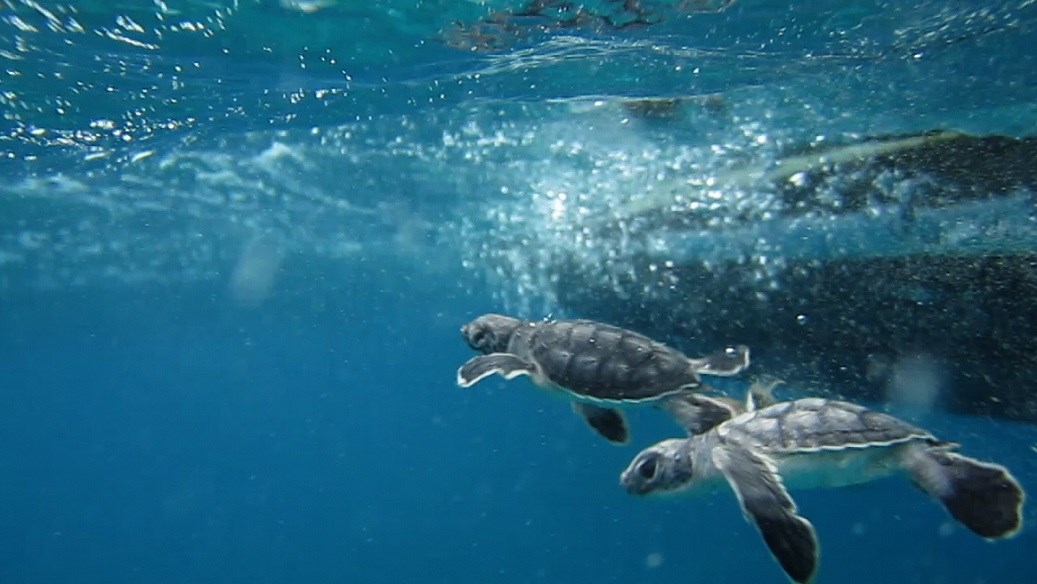
Swimming Turtles, CC0 Creative Commons, via the National Parks Service
You could even stay in Miami for the duration if roughing it isn’t your thing!
Of course, if you really want to have a trip that will stay with you for a while (and last a while), why not just do every National Park in the contiguous United States in one big road trip?
Forty-nine of the parks are in the lower 48 states, and you can trace a path around the country to hit them all.
If that sounds good to you but seems like a lot of planning, try following this map:
Source: Adventure Sport Network
It’s worth noting that two parks have been added since this map was made. But, if you’re already doing 47, two more won’t be too much trouble!
Mapping out your adventure
Unless you live close to a park though, it can seem daunting to plan a trip from the ground up.
I mean, you have to start six months in advance if you plan on camping!
Via GIPHY
Fortunately, there are a lot of folks who really want to get you into the National Parks. Not the least of these is the National Parks Service.
Every park website has all the information you need for planning your visit easily accessible.
If you’re a free spirit, you can plan it yourself on the NPS website. Or through sites like recreation.gov and findyourpark.com.
These aim to make the planning stages of your trip as pain-free as possible…
And get you into the parks without trouble.
Via GIPHY
You can start based on location or favorite activity at Find Your Park.
Or you can put a little more faith in NPS’s hands at recreation.gov. That lets you filter for your favorite points of interest, your sport of choice, and range of dates to visit.
Trusting the experts
Of course, there are other options.
If you’re feeling overwhelmed, or don’t want to miss anything, it’s easy to find places that will do the hard work for you. These sites are committed to leading tours and filling itineraries that show you all the parks have to offer.
Via GIPHY
Seriously, let’s take a look:
One site is Off the Beaten Path. They work with you to build a customized itinerary and packing list, so you’ll know you haven’t left anything behind.
If you’ve never visited a National Park or gone camping before, they take the guesswork out of it so you can leave feeling prepared for the wilds.
But there’s more…
National Parks Revealed is another such agency, focusing on nature-oriented tours and travel planning. When you sign up, you complete a detailed questionnaire about your travel plans to create a personalized itinerary.
With National Parks Revealed, you can also sign up to stay in a lodge near your National Park, or for a luxurious glamping stay.
There are as many ways to experience the parks as there are people who visit them. So, no matter how you want to go, there’s a way to love your National Park experience.
When are the parks open?
Determining the date of your National Park visit is an exercise in strategy.
Via GIPHY
If you’re looking for a way to spend a week off in summer, you’ll be joining thousands of Americans, especially at the most popular parks.
But, if you try to pass the winter in a warmer place like Hawaii or Florida, chances are you’ll run into plenty of snowbirds wanting to do the same.
If you don’t mind the cold, consider a trip to one of the more popular parks during the winter.
Winter changes the face of many parks and clears out other tourists, giving you a chance to enjoy the icy beauty of nature uninterrupted.
Via GIPHY
Of course, winter can be the best time to visit some of the warmer parks, like Big Bend on the border of Texas and Mexico.
The desert, normally sweltering, is much more tolerable when temperatures drop.
Just know that it’s quite a trip to get there. Even once you get to El Paso, you’ve got almost 6 hours of driving left ahead of you.
If you’re planning on your own, make sure to check the park’s website ahead of time. Calendars list when campsites are open and the sites display any unexpected park closures on the front page.
Spotlight: Great Smoky Mountains NP
If you’re feeling an easy choice on the East Coast, why not go for Great Smoky Mountains National Park? This verdant stretch of mountains straddles the North Carolina and Tennessee border.
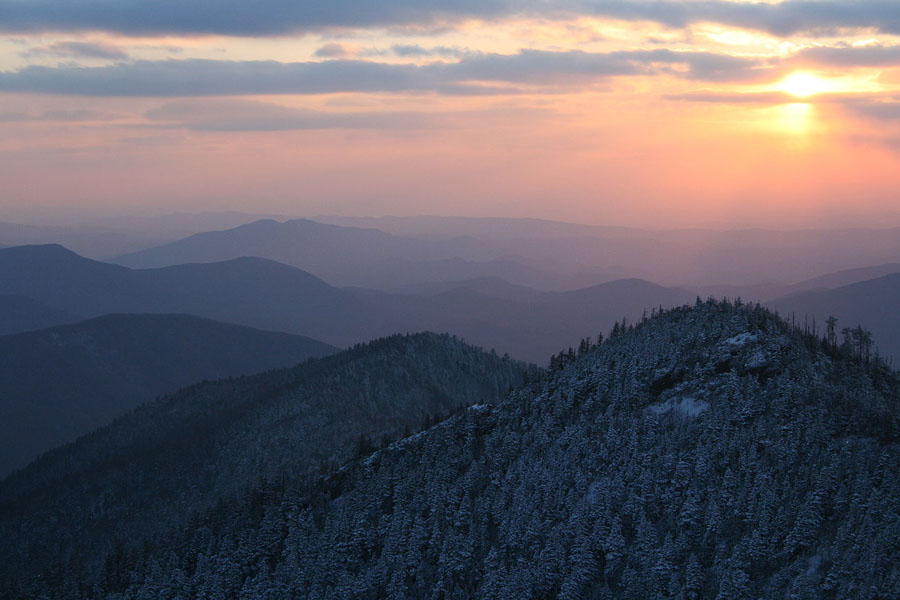
Clifftops by Aviator31 [Public domain], via Wikimedia Commons
With plenty of camping, whitewater rafting, and rock climbing, the Great Smoky Mountains have attractions for the avid outdoorsman. The park also contains 71 miles of the legendary Appalachian Trail and a portion of the beautiful Blue Ridge Parkway.
All of this contributes to Great Smoky Mountains National Park’s standing as the most-visited national park.
The beautiful Appalachian mountains stay green all summer long, shifting to brilliant autumn colors that attract hundreds of visitors.
Combine that with the popular Asheville, NC close by and a Cherokee reservation at the south end, and the Great Smoky Mountains have something for nature, history, and culture lovers in your group.
If you go for a hike off-season, you’ll find a park empty of its usual thousands of visitors. For camping though, you’ll want to go between May and October.
What to Do When You Arrive
Once you’ve made your plans and arrived in the National Park of your choice, it’s important to prepare yourself.
Via GIPHY
If you’ve opted for a more lighthearted car camping trip, which involves no hiking in or out, your experience will be much more streamlined and safe than a backcountry camping experience.
You still need to be prepared to have a safe and fun time! Packing your car with all the essentials, along with a few things for added fun, will make your National Park stay one to cherish for the rest of your life.
Camping basics
If you’ve never gone camping before, there are a few basics you need to know.
Starting out, you need some big-ticket items such as a tent, sleeping bags, and sleeping pads.
If you’re worried about breaking the bank for a one-time trip, there are alternatives. Borrowing or renting your equipment can save you some stress in the financial field.
Via GIPHY
Other essentials, though, you may have with you already.
Remember to bring lamps and flashlights, so you’re prepared for nightfall. A good camp lantern will keep you going even once the fire is out.
Speaking of fire, bring a camp stove and some fuel, to make sure you can stay warm and cook a hot meal. Plan your meals ahead of time, so you know what you’ll cook, how much you have to eat, and what you’ll buy on the way.
Of course, it always helps to bring snacks and extra food for an emergency!
Via GIPHY
Well, that’s probably not the best snack for camping… but who doesn’t love chips?
Finally, you have to stay warm.
While you probably mostly own cotton clothes, it’s not great fabric for the outdoors. Cotton stays wet easily and will make you cold. Look for wool and other blends meant to protect you from the outdoors.
Always prepare for the worst, and bring warm clothing and rain layers should the weather turn.
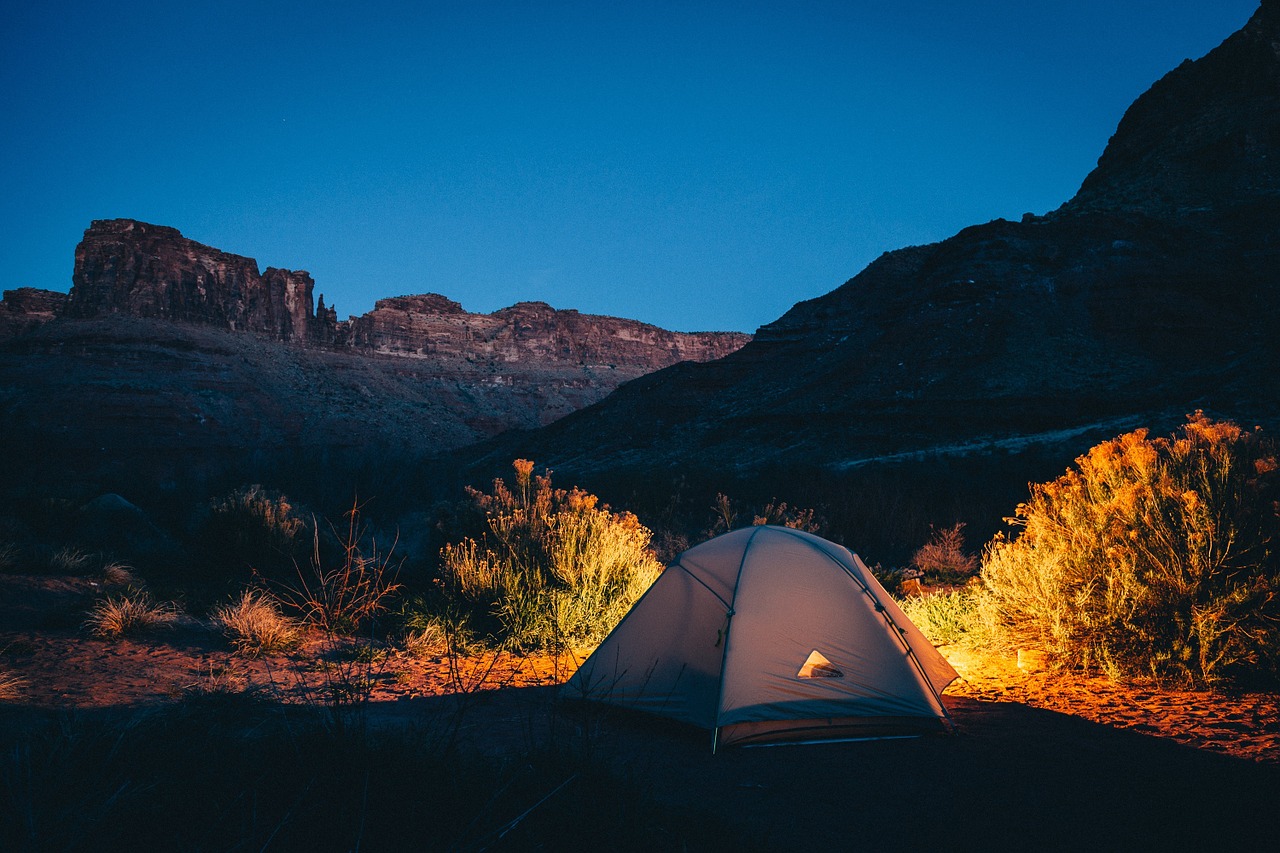
Image by Free Photos, CC0 Creative Commons, via Pixabay
Car camping and trailer camping
Car camping and trailer camping are classic ways to see the National Parks. Load up the family into the Airstream, and take off on a road trip!
Of course…
Airstream trailers aren’t as mainstream as they used to be.
But taking everything in a car or trailer makes the process that much more comfortable!

Image by Jim Wellington, CC0 Creative Commons, via Pixabay
Making your own amenities
Loading up coolers with fresh food, drinks, and bringing along equipment for activities that wouldn’t be viable in the backcountry, make camping a more accessible experience.
Campsites can be very comfortable these days, offering bathrooms and showers as well as running water, in some cases.
If that sort of thing is important to you…
All National Parks websites list the included amenities.
Car camping lets you bring along more than you would otherwise, but also requires a bit more equipment to keep everything running smoothly.
You can bring lots of extra clothing, for example, in case of cold weather.
Keep in mind:
Although most campsites have a picnic table and spots for your tent and car, there’s always a possibility they’ll run out of essentials like soap and other toiletries. Bring anything you might need for hygiene just in case.
Don’t forget, these things are very important:
You should also bring emergency tools like a first aid kit and a small toolbox. Water purifier tablets and extra flashlight batteries could be a literal lifesaver.
Spicing up your campfire cuisine
In terms of food, there are a few tips to have fun when car camping.
First, bring at least one cooler for your perishable food items. If you can, separate them into multiple coolers for different categories of food.
Via GIPHY
The same trick works for room temperature ingredients.
Carry staples like coffee, salt, and spices can go in one box, while snacks can go in another for easy access.
Bringing plastic tubs is sustainable and gives you a place to wash up dishes after eating.
Most importantly, pack lots of water. You may be surprised at how much you need in the wilderness!
Thinking ahead
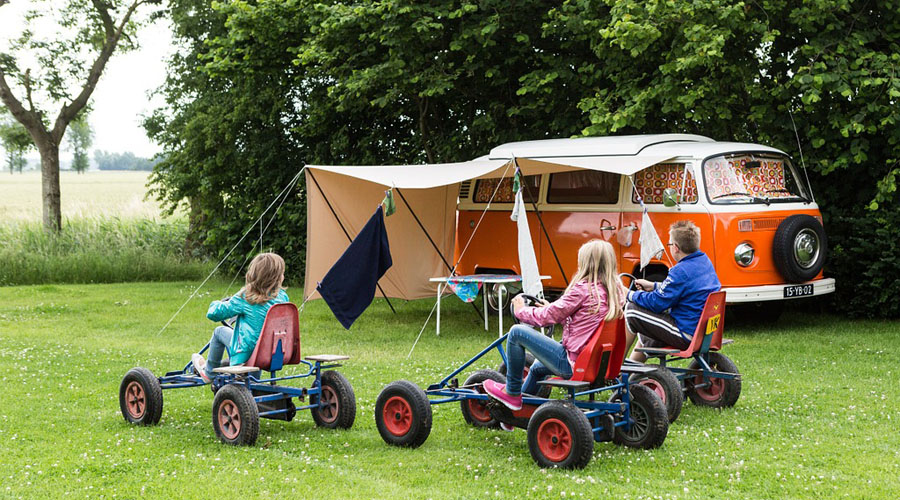
Image by Anita Oosting, CC0 Creative Commons, via Pixabay
If you’re traveling in the summer, you need to think at least six months in advance (or a little more).
That’s how far out campsites start booking in National Parks, and they fill up fast!
You’ll want to be ready to go as soon as registration opens, especially if you’re going to a park such as Yosemite or you’re taking an RV.
If you find yourself on a spur-of-the-moment trip, get to the park before noon to try and snatch up a first come, first served campsite.
Backcountry camping
Backcountry camping can be much more challenging than car camping, both physically and mentally.
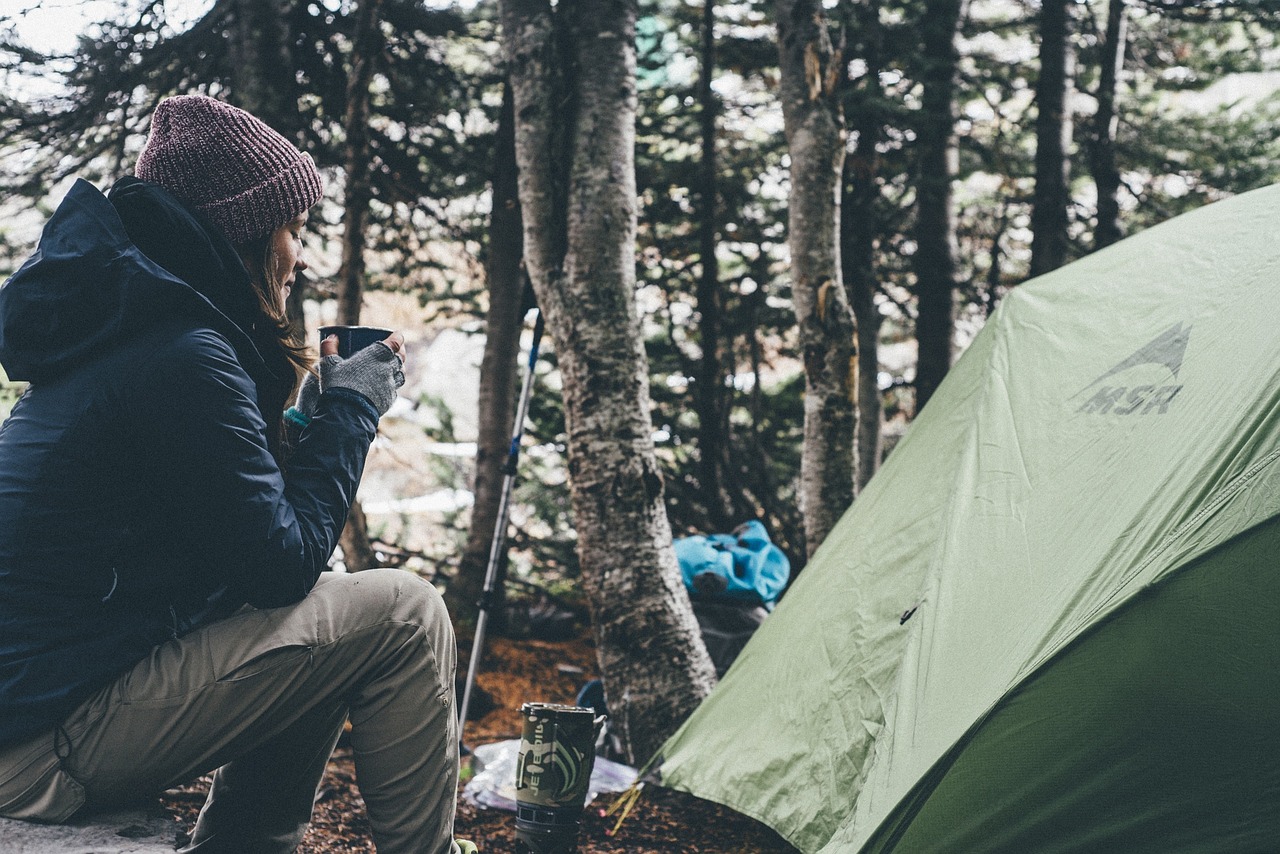
Image by Free-Photo, CC0 Creative Commons, via Pixabay
You could hike 5 to 10 miles a day, stopping to set up camp at night, then doing it all again afterward. It’s not for the faint of heart.
The most important thing to consider in backcountry camping is water.
You should always have at least 32 ounces of water on you, plus a way to get more. You might carry it in for an overnight trip, or bring a purification system with you, but never forget about this essential.
Like with any camping, you’re also going to want to focus on warmth.
It should go without saying that if you’ve never taken a backcountry trip before you should stick to a warmer season.
Still, as with car camping, make sure to bring moisture-wicking clothes and layers that will stay warm even when wet. While you probably don’t need a heavy coat in summer, preparing for the worst will keep you comfortable — and alive.
Know your hike
The NPS recommends a comprehensive plan for anyone taking even a brief backcountry camping trip.
As with every other aspect of the parks, everything you need to know about camping in your chosen location is on the website for you.
Let’s illustrate this: It’s best to have a plan and register it. If this happens:
Via GIPHY
In the middle of nowhere, and you are hurt, you’re going to want to know someone will be looking for you.
This includes paying attention to park permits and regulations.
Remember:
Some parks require a backcountry permit that you must apply for ahead of time…or else have limits on where you can camp beyond designated campgrounds.
Don’t go it alone
Speaking of wanting someone to come looking…
Maximum safety comes when people know about your plans.
Friends at home should have a detailed itinerary, and NPS recommends leaving a copy in your car for rangers if there’s an emergency.
You should also camp with a companion. Having a friend along will improve your safety immensely, and can insure you against the most unexpected accidents.
Finally and most importantly…
Make sure you’re ready.
Don’t try to go and hike 50 miles without taking some time to condition yourself. Know your gear, know the area well (a map and GPS are crucial!), and make sure friends and park officials know where you are.
What to do in an emergency
Having an emergency while camping, whether backcountry or front-country, can be very frightening. Fortunately, as with everything in camping, adequate preparation will usually save the day.
A good first aid kit can make a world of difference.
Know what could happen ahead of time will make sure you’re not surprised if it does happen out in the wilderness.
Let’s look into that more…
Common injuries and illnesses
Via GIPHY
A lot of the core items in a camping first aid kit are the same as in an everyday first aid kit. They cover wound care and pain management.
You should always have tools like antiseptic towelettes and antibiotic ointment, as well as gauze and other sanitary packing materials. Of course, you’ll need a collection of bandages too.
Things to keep in mind:
Basic medications are also key to a well-functioning first aid kit. Common painkillers reduce inflammation and can cut through fever symptoms. Antihistamines can help with minor allergic reactions as well.
You should also know what sort of injuries members of your group are susceptible to. It’s always a good idea to include an EpiPen, even if you don’t know of any severe allergies.
The backcountry is not the time to find out!
If you’re spending more time in the backcountry, consider more advanced items like heat-reflective blankets, CPR masks, and GPS locators.
Staying safe around park wildlife
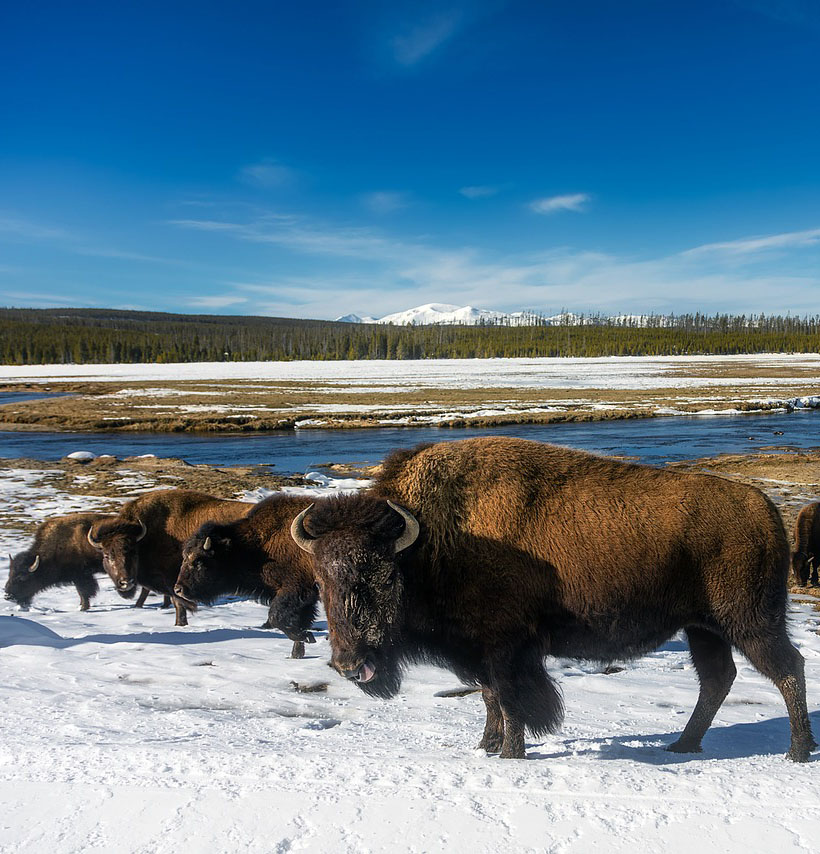
Bison, image CC0 Creative Commons, via Pixabay
One of the less-predictable aspects of camping, especially in a National Park, is the wildlife. Even relatively peaceful animals can be quite dangerous in the wrong situation. It’s important to know how not to provoke them.
Don’t be one of those tourists who antagonizes an animal to get the perfect photo.
Via GIPHY
Yellowstone, with its widely famed biodiversity, has a well-recorded history of animal attacks on uncautious visitors.
Respect them, and their space.
Bison and grizzly bears roam the park freely at the same time as 4 million humans throughout the year.
The NPS site for Yellowstone warns never to approach animals for any reason. Even calm creatures are still wild, and your actions may unexpectedly provoke them.
Our advice?
If you’re going to the parks for wildlife, staying in your car is the safest bet. For anyone else, keep a safe distance from wildlife and let them carry on in peace.
Your enjoyment won’t diminish by you seeing a bison from farther away.
It will be if you’re injured when it charges you.
Preserving Our Parks: The Next 100 Years
But what you can do is to keep [the Grand Canyon] for your children, your children’s children, and all who come after you…”
As an entity, the National Parks Service just reached its 100th year in 2016. And 2019 marks the centenary of one of the best-known parks, the Grand Canyon.
But one of the most critical aspects of the National Parks mission is conservation. So future generations will always be able to see the natural splendor of the untouched American continent.
The way it was, and the way it is meant to be:
Via GIPHY
As the climate changes and threatens the park, and as bureaucracy battles over their boundaries, the future of the National Parks may be unsure:
During the government shutdown of early 2019, Joshua Tree National Park was vandalized.
Trees were knocked down or spray-painted, and people littered because there was no park staff to stop them.
The damage sounds minor, but it could take three centuries to recover.
Three. Hundred. Years.
But the National Parks represent the collective spirit and pride of the United States or at least the ideals that lay at the heart of America.
That means it’s the responsibility of every visitor to the National Parks to treat them with respect.
And not just because some ranger says so!
If we want to enjoy them right now, we have to make sure that others can enjoy them too, whether alongside us or far in the future.
Ready for your trip to our Nation’s treasured wildlands? We are! See you there!
Via GIPHY
Featured Image: CC0 via Pixabay
